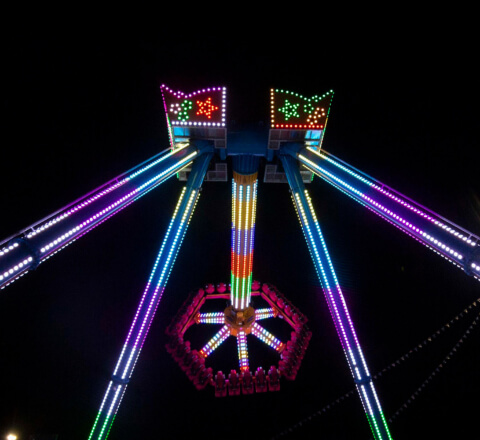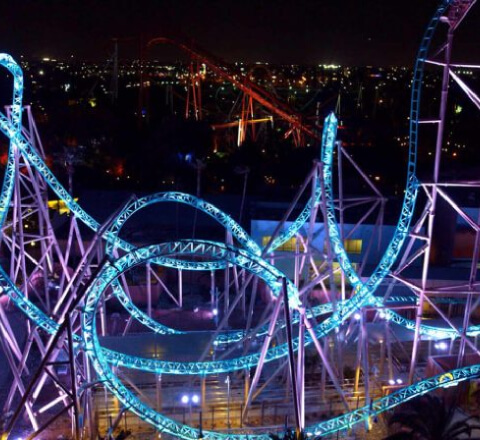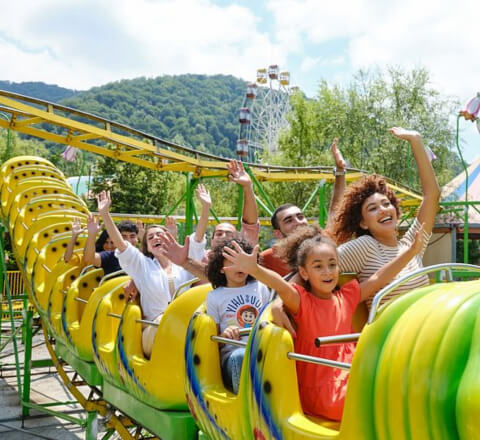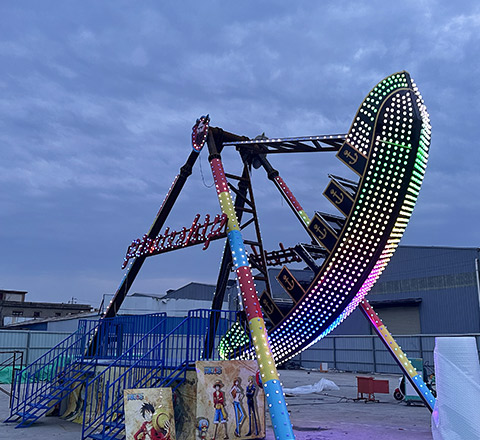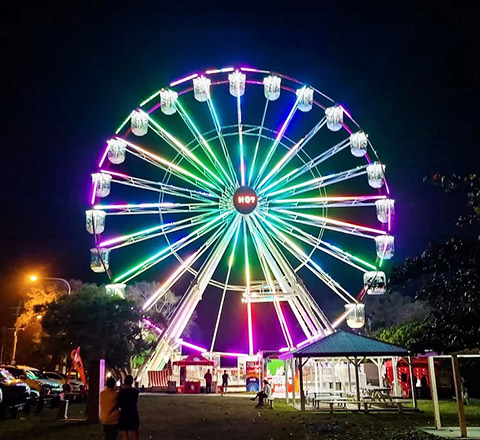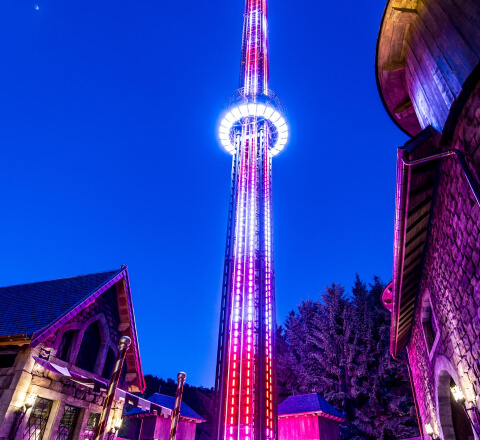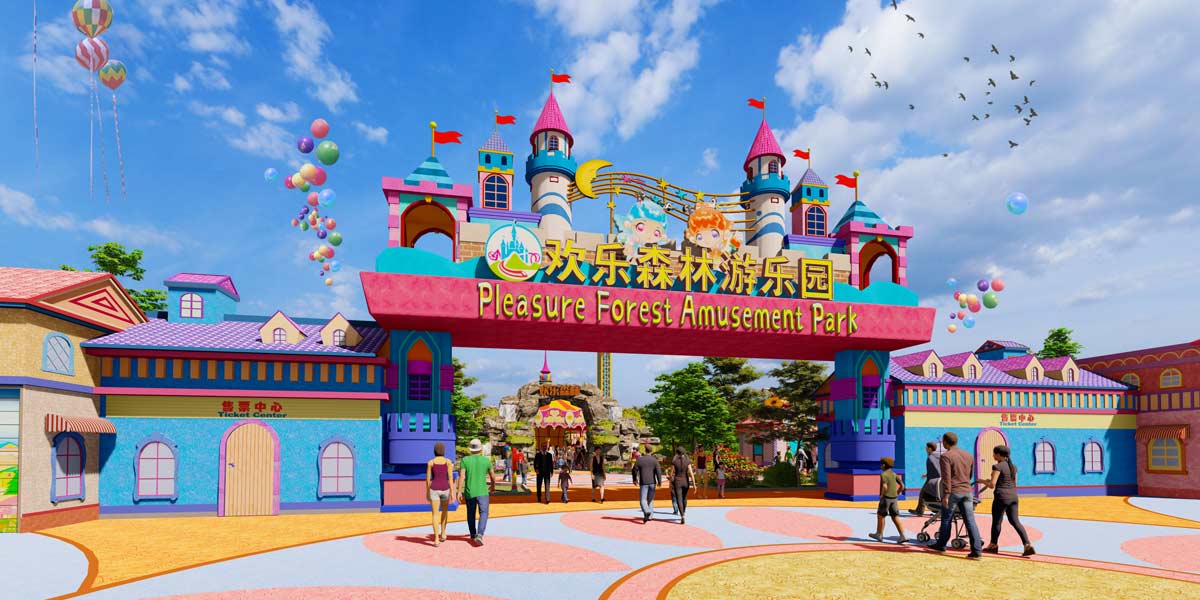
How to start an amusement park? In fact, building an amusement theme park requires comprehensive preparation and meticulous design. Through the following 7 simple steps, you can easily solve all the challenges encountered during the building of the amusement park. From market research to implementation, we provide you with a detailed guide to help you create an attractive and profitable amusement park in 2025.
Step 1: Determine the Theme & Design Style of the Amusement Park
Before building a theme park, the first step is to define the park’s theme and style. This step is crucial because the theme not only impacts the visitor experience but also directly influences your amusement park’s design, target market, and long-term operational strategy. When determining the theme, it’s best to consider the interests and needs of your target audience and choose the style that best aligns with market trends and your goals.
- Fairy Tale and Fantasy Style
Examples: Disney Parks, LEGO Land – Warm and romantic, perfect for families and young children, offering a magical fairy tale experience. - Futuristic and Technological Style
Example: Universal Studios Future Tech Zone – High-tech and virtual reality experiences, ideal for young people and technology enthusiasts, providing an immersive modern experience. - Adventure and Nature Style
Example: Six Flags – Combining natural landscapes and extreme sports, perfect for those who love adventure and outdoor activities. - Historical and Cultural Style
Example: Europa Park – Based on various historical and cultural themes of Europe, offering visitors a chance to experience the traditions and history of different countries. - Horror and Mystery Style
Example: Halloween Horror Nights – Creepy and mysterious atmospheres, ideal for visitors who enjoy terrifying experiences and challenges, providing thrilling and suspenseful amusement attractions.
Step 2: Market Research
Before building a theme park, it’s important to know what your visitors want and like. By doing market research, you can understand their preferences and trends, helping you design an amusement park that attracts more people and makes them want to come back again and again.
1. Identify Target Groups
- Families: Most visitors, especially with kids. Offer amusement activities and facilities for all ages.
- Young People & Thrill Seekers: Love excitement, roller coaster ride, virtual reality, and high-tech amusement rides.
- Seniors: Prefer a quiet, comfortable environment with gentle attractions or cultural themes.
2. Study Market Trends
- Emerging Technologies: VR, AR, and AI are becoming popular attractions.
- Health & Sustainability: Visitors care more about eco-friendly parks and sustainable practices.
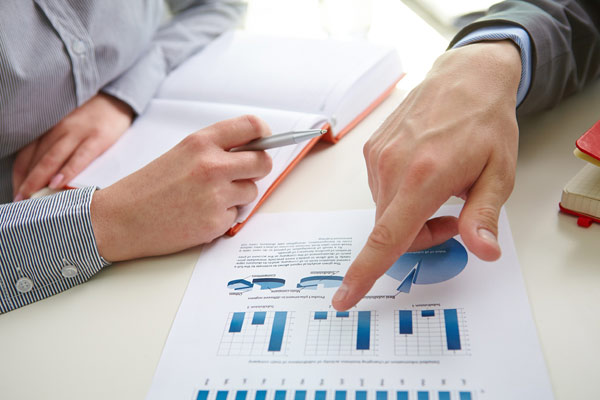
3. Competitive Analysis
- Study nearby parks to learn from their successes and mistakes, so you can create a better, more competitive amusement park.
Step 3: Overall Amusement Park Planning — Maximize Every Inch of Space
The overall planning of a theme park is very important because it affects how visitors experience the park, how smoothly everything runs, and how profitable the theme park is. A good attractions theme park layout helps visitors move around easily, reduces crowded areas, and makes attractions work more efficiently. It also ensures that different sections of the amusement park, like shopping areas and rest zones, are placed in the best spots.
1. Main Functional Areas
A complete amusement theme park should include multiple functional areas, each with a clear theme and focus, ensuring that visitors of all ages and interests can find suitable attractions.
| Area | Description |
| Entrance Area | Ticket booths, guest services, baggage storage, first aid station, information desk |
| Thrill Adventure Zone | Roller coasters, drop towers, giant swings, extreme rides that attract young visitors |
| Family Fun Zone | Carousels, bumper cars, small roller coasters suitable for families and children |
| Children’s Fantasy Zone | Fairytale castles, mini amusement areas, family interaction activities |
| Future Tech Zone | Roller coasters, drop towers, giant swings, and extreme rides that attract young visitors |
| Performance & Parade Zone | Large theaters, daytime parade routes, night-time light shows |
| Dining & Shopping Zone | Themed restaurants, food courts, souvenir shops |
| Rest & Scenic Zone | Green spaces, fountains, artificial lakes, shaded rest areas |
| Parking & Transport Zone | Parking areas, public transport connections, park shuttles or trams |
2. Visitor Flow and Traffic Planning
✅ Circular main roads + connecting pathways to ensure that visitors can quickly reach different areas while reducing congestion.
✅ Smart navigation systems with electronic maps and interactive query screens in each area to help visitors easily find their way.
✅ On-park transportation facilities, such as cable cars and small trains, to help visitors travel quickly between different areas.
3. Green, Eco-friendly, and Safety Design
🌱 Eco-friendly Facilities: Solar-powered lighting, rainwater recycling, and waste separation to enhance sustainability.
🚑 Safety and Emergency: Properly distributed first aid stations, emergency exits, and surveillance systems to ensure visitor safety.
🏡 Comfortable Experience: Reasonable arrangement of rest areas, shade shelters, and air-conditioned rooms to make the visit more comfortable for guests.
Step 4: Draw 3D Blueprints Based on the Amusement Theme Park Planning Design
Many people overlook this step, but it’s a crucial phase in amusement theme park design. Here, you’ll need to choose a reliable theme park design company to transform your ideas and requirements into 3D plans.
How to choose the right design team?
- Budget: Architectural firms are expensive (ranging from tens of thousands to hundreds of thousands), while freelancers are cheaper (a few thousand).
- Requirements:
- Complete Planning and Design → Architecture companies / Theme park design companies
- 3D Renderings → 3D visualization companies / Freelancers
- VR Experience → Game development companies
3. Past Work: Review the portfolio of designers or companies to ensure they align with your needs.
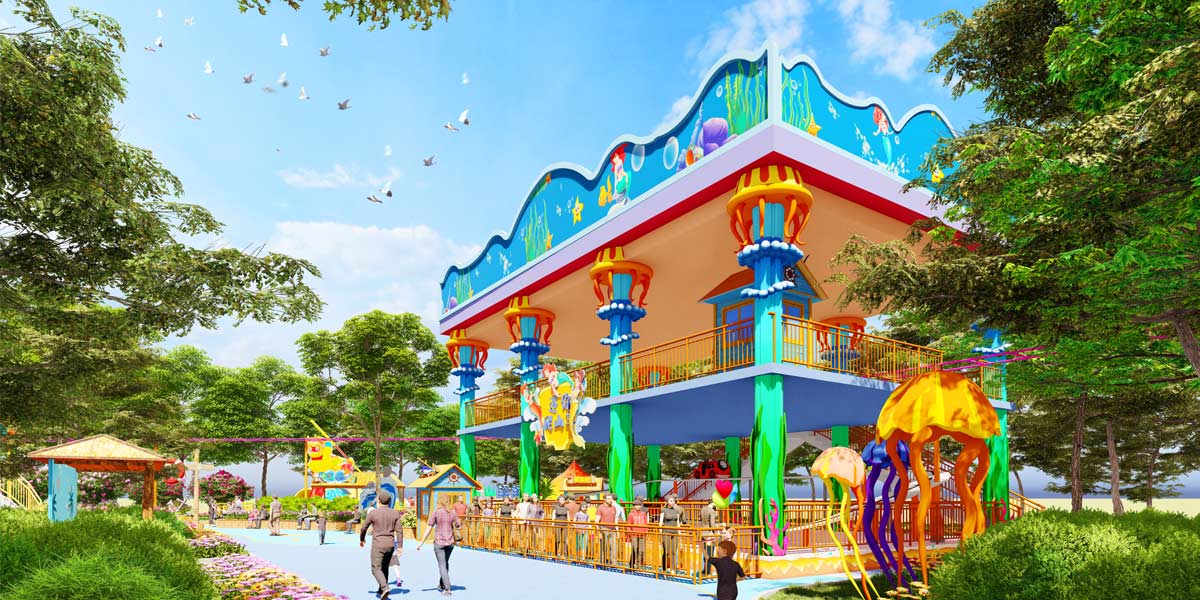
Step 5: Select Amusement Rides — Create Unforgettable Experiences
The choice of amusement rides is the heart of the park. Selecting rides suitable for different age groups will ensure visitors enjoy the park thoroughly. Prioritize: aligning with target visitors, ensuring safety, innovative experiences, and eco-sustainability. Only through carefully selected attractions can you create lasting memories for visitors.
- Thrill Rides (Young People & Extreme Sports Enthusiasts)
Roller Coasters, Drop Towers, Pirate Ships, Pendulum Rides
2. Family-Friendly Rides (Families & Children)
Carousels, Bumper Cars, Family Coasters, Tea Cup Rides
3. Future Tech Rides (Tech Enthusiasts)
VR Coasters, Flying Theaters, Robot Interactions
4. Leisure & Relaxation Rides (All Ages)
Ferris Wheels, Train Rides , Castle Walks
Step 6: Choose a Reliable Amusement Rides Manufacturer — Design, Customization, After-sales, and Maintenance
Choosing a reliable amusement equipment manufacturer is key to ensuring smooth construction and long-term operation. Important steps include:
- Ensure Equipment Meets International Safety Standards
- Manufacturer Credentials & Experience
- Equipment Quality & Technical Support
- After-sales Service & Warranty
Step 7: Construction Preparation — Time to Begin Theme Park Building
Once the theme park design is ready, it’s time to start building. This step ensures everything is well-organized so the project runs smoothly, stays on schedule, and meets the budget and quality standards.
- Choose an Experienced Construction Team: Hire a skilled team to handle the construction work.
- Get Necessary Permits and Approvals: Obtain all legal permits and approvals before starting construction.
- Procure and Transport Materials: Gather and transport the materials needed for construction.
- On-site Management and Safety: Ensure the site is properly managed and safe for workers.
- Install and Test Equipment: Set up all amusement rides and equipment, then test them for safety and performance.
- Landscaping and Themed Decorations: Add landscaping and decorations to match the amusement park’s theme.
- Comprehensive Testing and Acceptance: Do a final check to make sure everything works well before opening.
By following these seven steps, you’ll be well on your way to build a competitive theme park. Each phase, from market research to amusement theme park design, equipment selection, and construction preparation, lays a solid foundation. You’ll ensure your park not only meets visitor expectations but also stands out with unique themes, innovative attractions, and efficient management, drawing large crowds and maintaining long-term brand competitiveness.

